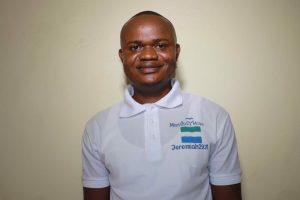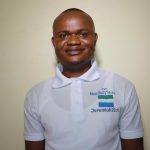The main well in Laminaya dries for several months out of each year. This leaves the 151 people relying on that water with no choice but an open, hand-dug hole in the swamp.
Community members rush to the protected main well each morning, jostling to claim what little water might still remain at the bottom of the well. But during the dry season, which stretches from March to June of each year, the water disappears quickly. This means people who have waited in line, sometimes for hours, will be frustrated to discover that this time was wasted.
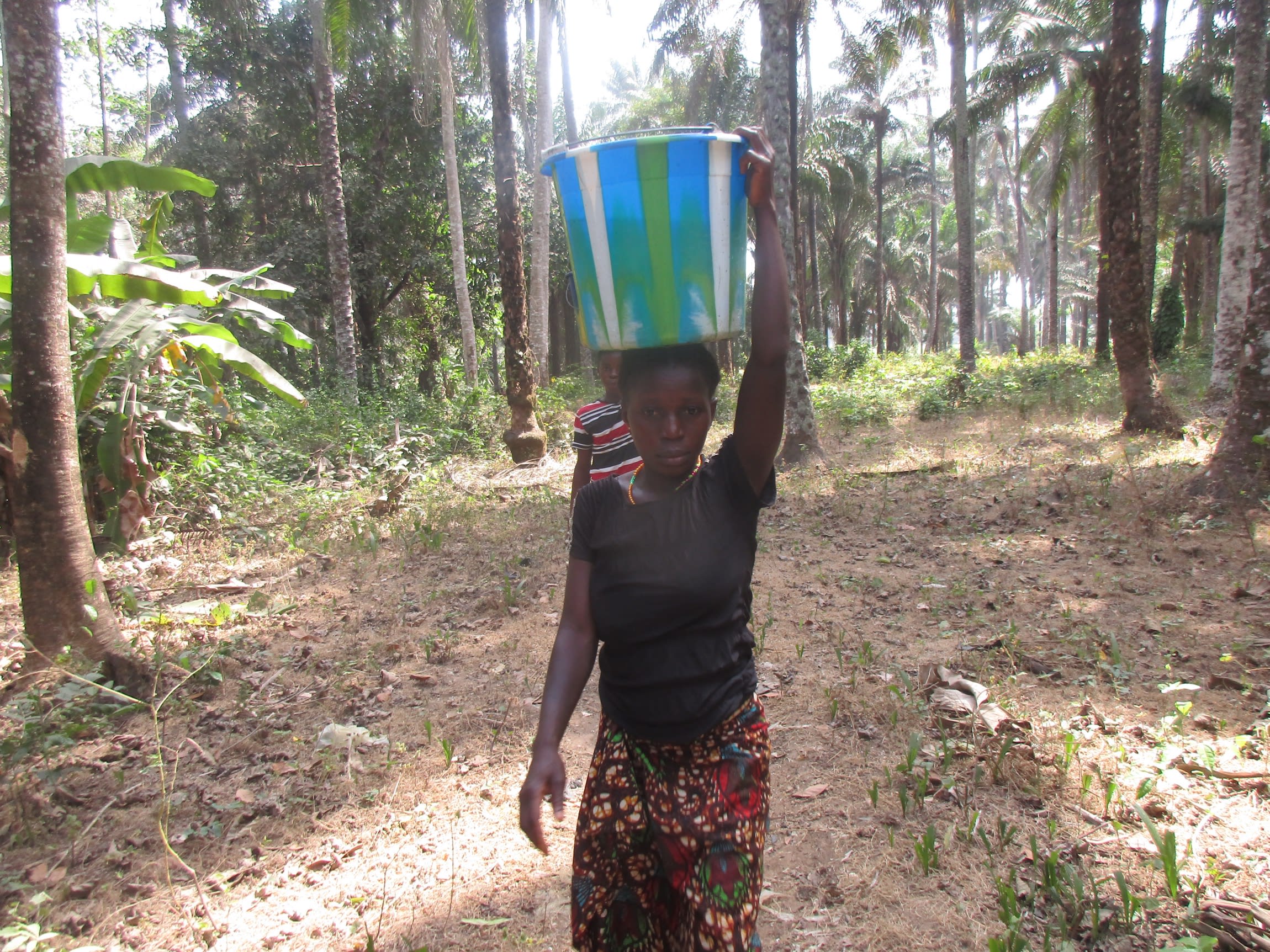
We interviewed community members in February, right before the start of the dry season. This is why 35-year-old Fatmata, a food trader (in the above photo), was so full of worry.
Fatmata said: "The pump water well will soon get dry and the water well at the swamp will also be hard to get clean water to drink, because everyone in this village will use it for different purposes. Laundering of our dirty clothes, cooking, and bathing will be hard to complete because of water shortage."
Fetching water from the swamp well requires a lot of energy. The villagers use a hook on a stick to hold the container that they dip in the well to fetch water. Pulling the bucket of water out is difficult, especially for children.
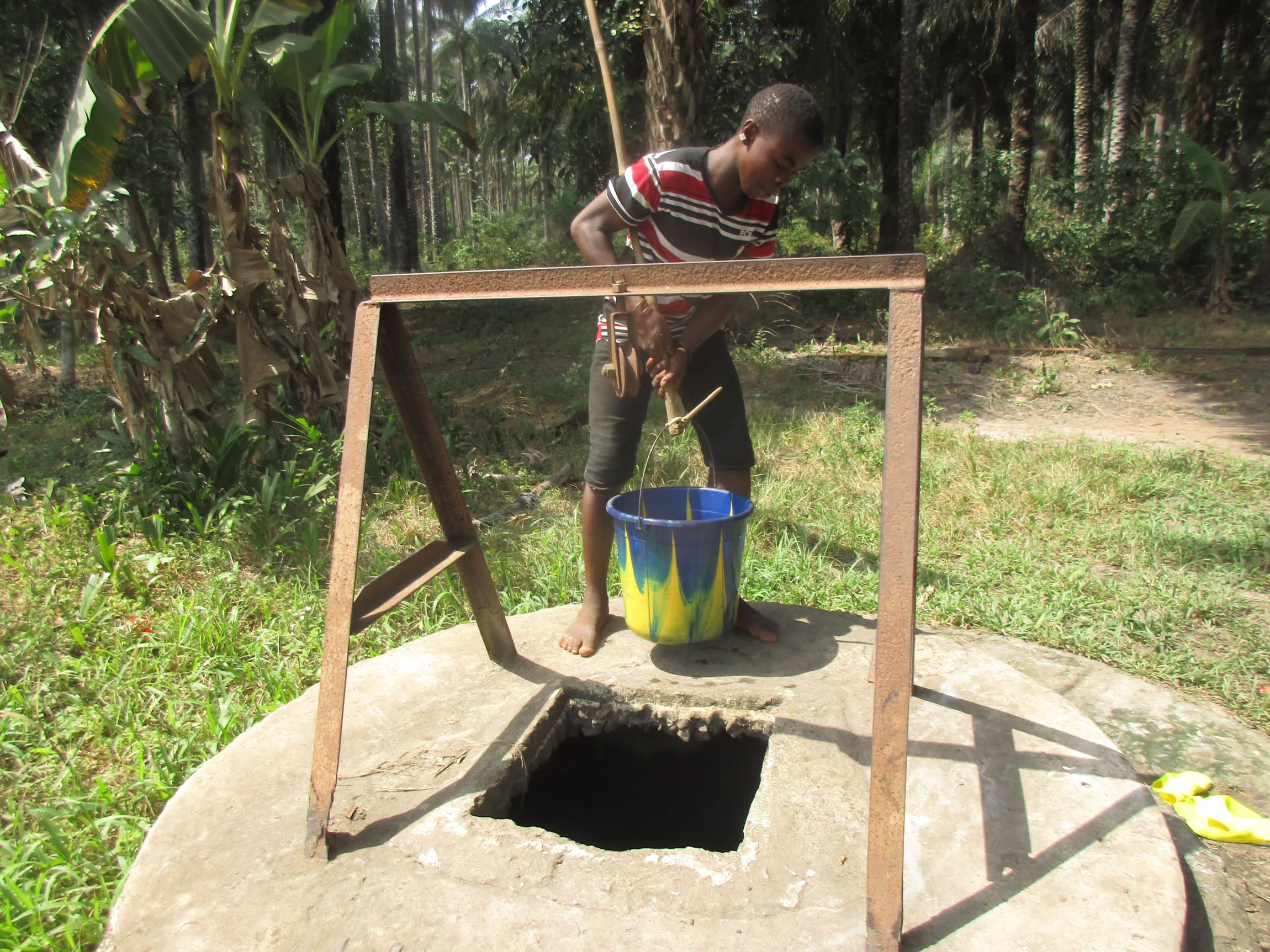
"I wake up early in the morning to fetch water before going to school," said 13-year-old Yusuf T, pictured above at the swamp well. "I use water to bathe and eat in the morning before going to school. When there are too many people at the water well, I go to school and fetch water after I have returned home. To fetch water after school is not easy for me because I get tired and hungry after school, but I must fetch water for my mother to prepare food for us to eat."
The demand for water is ever-present, which means even the swamp well has run dry on a few occasions. Community youths have been commissioned to dig the swamp well deeper, which is dangerous (hand-dug wells without proper casings can sometimes collapse inward). Without this risk, however, the entire community would be without water entirely.
"The water is sometimes dirty," Yusuf explained. "I fetch it and place it to settle before my mother could drain the dirt from the water."
But just because the water appears clear doesn't mean that it is clean. The condition of the swamp well is a recipe for contamination. People do laundry and bathe around the area, which is also open to wildlife. These factors cause illnesses like stomach cramping, diarrhea, typhoid, and parasitic infection.
Not only does this critical water shortage affect community members' health, but it also prevents them from earning a proper income. So many of the common livelihoods in this community need water to complete tasks properly. This perpetually reduces the income they are able to earn.
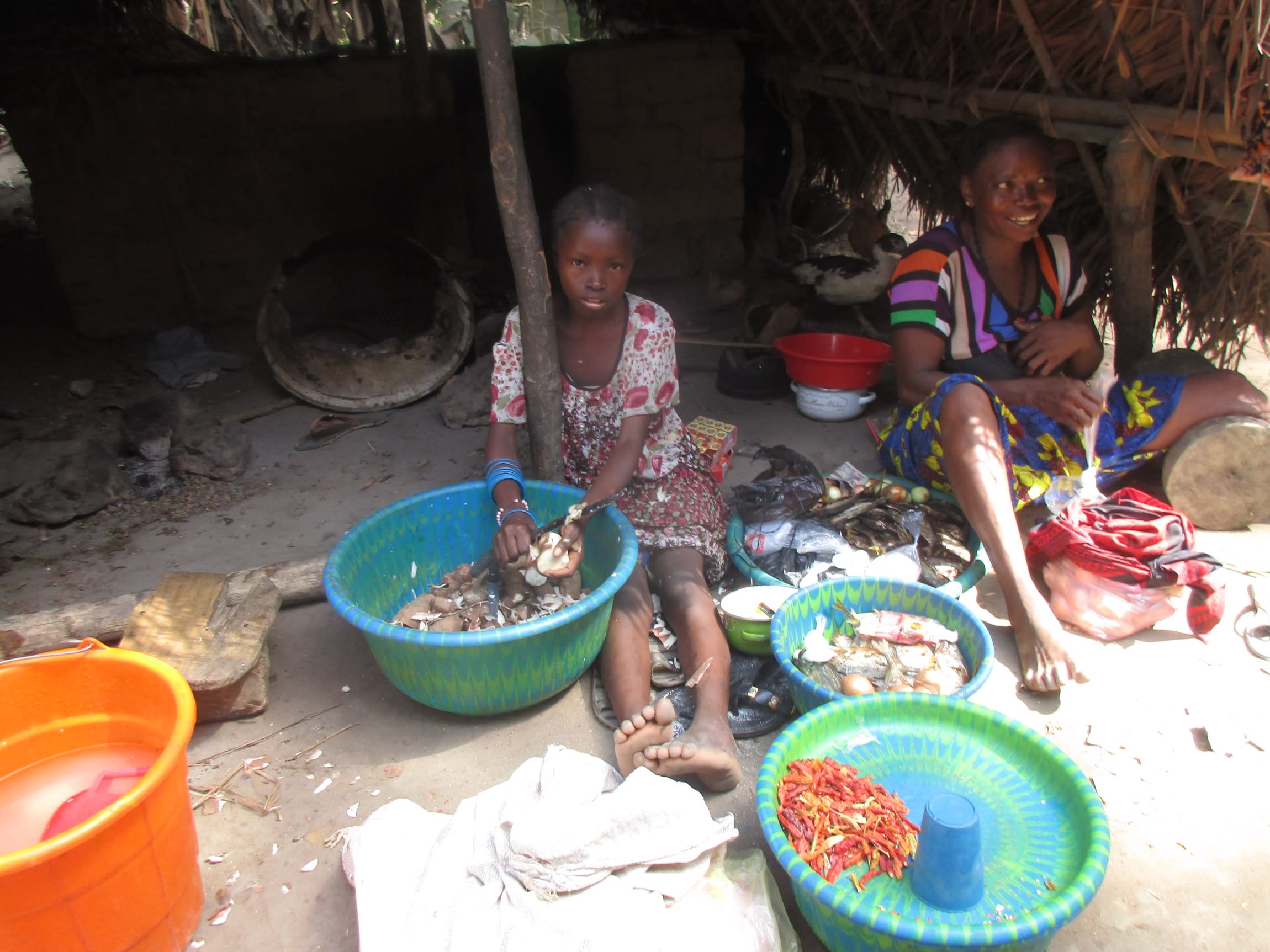
"I need water to do my business every day," Fatmata explained. "The little amount of water I can get from the pump is not enough for my business and other domestic activities. My children go to school in the morning. I do all the house activities before selling my business. Sometimes I am late to reach my customers. I lose better sales because of that."
"[The] water shortage is a challenge [for] me and my family in this village," Fatmata concluded. "I hope the problem of water will come to [an] end."
Here’s what we’re going to do about it:
Well Rehabilitation
The well marked for this overhaul is dry for a few months every year and needs major work to supply adequate, clean water to the community year round. The pump will be removed, and a hand auger will be lowered inside and powered by a drill team. This hand auger will allow the team to drill several meters deeper to hit a sufficient water column that will ensure the well supplies water throughout all seasons.
As the team drills, casing will be installed, transforming the bottom of this hand-dug well into a borehole. PVC piping will connect this lower system directly to the pump, a construction that we know will also improve the quality of water.
Once this plan is implemented, everyone within the community will have access to safe drinking water in both quality and quantity, even through the dry months.
Hygiene and Sanitation Training
There will be hygiene and sanitation training sessions offered for three days in a row.
After our visit, the hygiene and sanitation trainer decided it would be best to teach community members how to build a tippy tap (a hand-washing station built with a jerrycan, string, and sticks). They will use these tippy taps for handwashing demonstrations, and will also teach about other tools like dish racks and the importance of properly penning in animals.
These trainings will also strengthen the water user committee that manages and maintains this well. They enforce proper behavior and report to us whenever they need our help solving a serious problem, like a pump breakdown.

 Borehole Well and Hand Pump
Borehole Well and Hand Pump









